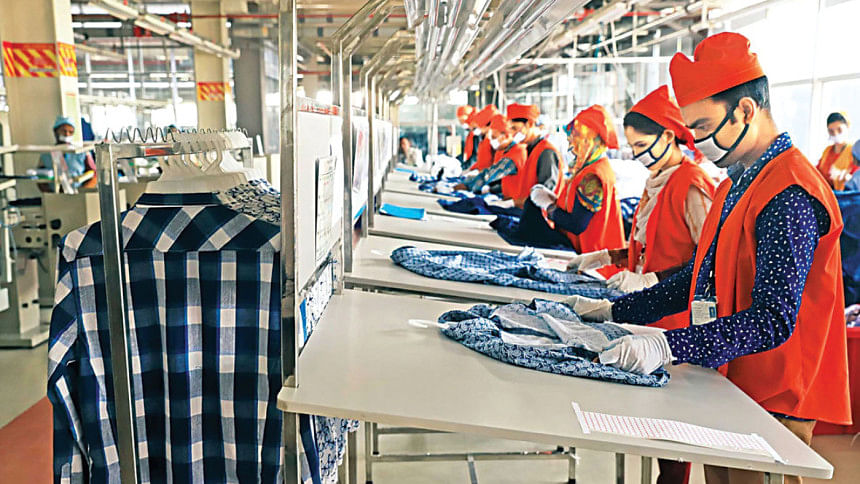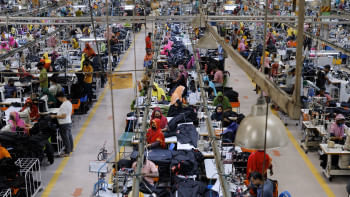Tariffs and trade wars: Bangladesh’s path in a new geo-economic order

The trade war between the US and China has become a significant topic of discussion among policymakers and academics since Donald Trump took office in 2025. It started during Trump 1.0, continued under President Joe Biden, and further expanded under the Trump 2.0 era. Trade policy pundits argue that these policies have been criticised globally. However, analysis of American industrial history, economic prosperity, and the current state of international trade imbalances can broaden our perspective on the trade war and American policies.
Reindustrialisation, entrepreneurship, innovation, and creating opportunities for millions of individuals have become crucial for developed economies. The trade war of Trump 2.0 will likely remain active in the coming years and affect global value chains (GVCs). Economies across the globe might reconfigure their participation in GVCs by re-orchestrating their downstream and upstream involvement depending on each economy's context. The global production networks need to consider economic efficiency, productivity, optimisation of resources and strategies, and geo-economic and geopolitical realities.
China has shown resilience and successfully reconfigured its value chains since the trade war of Trump 1.0. However, not all economies have the free hand and resources to do so. China was the largest source of imports to the US until 2022, capturing 21 percent of the import share. Since then, China has reduced its exports to this market by diverting and increasing its exports to non-US and non-EU markets in the Global South. They have also invested heavily in developing their technological prowess under the "Made in China 2025" policy and the Belt and Road Initiative.
Bangladesh, not possessing all of China's capabilities, can learn from China's experience and reformulate international trade strategies for geographical and product diversification. Thanks to its participation in GVCs, Bangladesh has become the second-largest exporter of RMG. The imposition of tariffs has created panic among the RMG industry, policymakers, and other stakeholders. Even before the start of the trade war, Bangladesh's RMG industry faced serious challenges, such as low-cost and labour-intensive manufacturing, highly concentrated export markets, intermediate component and raw material sourcing, political uncertainty, graduation to a lower-middle-income country, and loss of advantages as a least developing economy.
Bangladesh should diversify its intermediate components and raw materials sourcing instead of relying on only China and India. This could involve enhancing trade relations with Pakistan, Central Asian countries, Southeast Asian countries, and the US. Many Central American countries use American cotton to produce RMG products and export them to the US in a duty-free and quota-free mode. This strategy could lessen the trade deficit and encourage American policymakers to reconsider tariff levels for Bangladesh. Demonstrating a sincere effort in reducing trade deficits and strengthening partnerships in the geo-economic and geo-political arena, including in the Indo-Pacific area, might lead the US to reconsider the tariff issue, offer Generalized System of Preferences (GSP) facilities, and attract more American investment and technology transfers.
Bangladesh's economy and the current administration are facing challenges due to the US tariff imposition, though based on a flawed measurement. The current market dynamics and restructuring of the GVCs have led to a shift in the RMG sector from low-cost, low-tech, and labour-intensive business models to high-tech and higher value-added products. To survive and prosper in this competitive business ecosystem, the government should play the role of promoter by developing specific initiatives and strategies that encourage, enable, and encourage the RMG sector to come out of the low-cost, low-tech, and labour-intensive business models.
Bangladesh can attract firms quitting the Chinese and Vietnamese markets by developing the skills and productivity of its employees, investing in advanced technologies, and creating a welcoming business environment. Public policies should focus on improving the manufacturing ecosystem so that firms from other countries choose Bangladesh as their production hub to export to global markets. The competitiveness of RMG products depends not only on the cost of labour but also on the physical and soft infrastructure, both formal and informal institutions, and on stimulating public policies.
Improving infrastructures and institutions, including the smooth operation of seaports, shipping, customs administration, and banking services, can help RMG factories enhance their competitiveness. Bangladesh should diversify its export market to non-traditional markets, such as African, Middle Eastern, and South American markets, where there is a huge demand for low-cost, high-value RMG products. The interim government should discuss and negotiate with the two largest neighbouring markets, India and China, to remove non-tariff-related barriers (NTB) so Bangladeshi products can enter those markets without hassle.
Bangladesh faces the prospect of losing several advantages it enjoys as a least developed country. To address this, the government should renegotiate or ask for a delay in applying tariffs once it graduates to a lower-middle-income country. For the medium and long term, Bangladesh must sign free trade agreements with leading export markets to make trade smoother. We must focus on upgrading the value ladder for our exportable products, diversifying product baskets, and ensuring technology transfer through international joint ventures and other equity investments.
People generally do not like "change" and prefer to maintain the "status quo," which leads to organisational inertia. Crisis and a chaotic environment bring opportunities to think freshly, introduce harsh reform, and rebuild organisations. The current global trade frictions can help create many opportunities for Bangladesh's manufacturing industry if proper reforms, investment in infrastructure and technology, and institutional policies are updated, and effectiveness is improved.
Dr Muhammad Mohiuddin is professor at Laval University in Quebec, Canada. He can be reached at [email protected].
Views expressed in this article are the author's own.
Follow The Daily Star Opinion on Facebook for the latest opinions, commentaries and analyses by experts and professionals. To contribute your article or letter to The Daily Star Opinion, see our guidelines for submission.

 For all latest news, follow The Daily Star's Google News channel.
For all latest news, follow The Daily Star's Google News channel. 









Comments